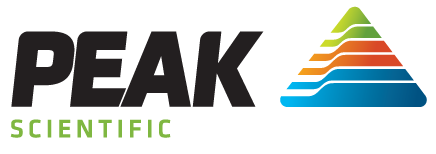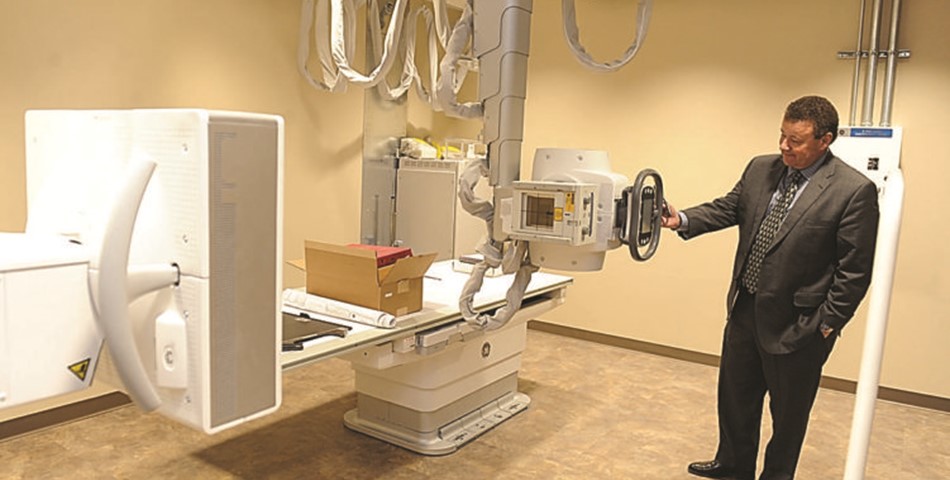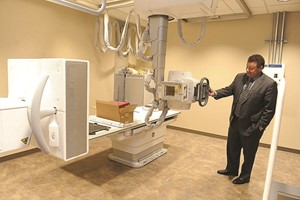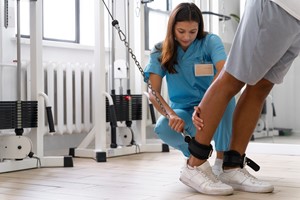UPMC Altoona has recently deployed robotic equipment enabling doctors to sample tissue in the outer regions of the lungs to see if it is cancerous, allowing for early lifesaving treatment.
The equipment includes a video game-like controller, an endoscopic sheath with telescoping tube containing a camera, a needle, a claw and a brush that are manipulated based on virtual and actual images on screen, according to Darin Kowalski, account manager for Johnson & Johnson’s Auris Health, manufacturer of the Monarch Platform system.
Optical pattern recognition software — similar to GPS direction finders in vehicles — allows doctors to navigate through lung passageways to the target, based on a CT scan image that originally depicted nodules, Kowalski said.
The equipment allows for biopsies on those nodules in the periphery of the lungs that used to be virtually inaccessible, according to officials at a Thursday presentation.
Absent such equipment, doctors who suspected that a nodule detected by scan was cancerous were limited to “watchful waiting” until a later scan could show whether significant growth of those spots indicated cancer — at which point it would often be too late to do anything, according to Kowalski.
Lung cancer kills more people than cancer of the colon, breast and prostate combined, Kowalski said.
The new equipment is part of a “leapfrog” in technology over the last few years, according to Dr. Mehrdad Ghaffari, chief of pulmonary services and medical director of intensive care at UPMC Altoona.
The Monarch Platform enables doctors to get “more accurate samples” so patients can begin receiving appropriate treatment, Ghaffari said.
Such treatment is likely to include surgery to remove cancerous lesions, while the lesions are “still amenable” to treatment, according to Ghaffari and Dr. Gerald Belopolsky, a pulmonologist.
The equipment, with its tubing sent down patients’ throats, allows doctors to obtain biopsy samples with “high precision,” Belopolsky said.
The airways in the lungs are complex and those in the periphery of the lungs are tiny, Kowalski said.
The hole through which the needle, claw and brush extend is 4.4 mm — less than 3/16 of an inch — in diameter, according to Kowalski.
Both the sheath and the scope can bend independently, Kowalski said.
The sheath can bring the scope close to the target with the scope retracted, providing stability, then the scope can extend beyond the sheath toward the more restricted target area, he said.
The equipment provides both a virtual and actual view because sometimes the actual view becomes blurry with secretions or bleeding, Kowalski said.
Doctors who will use the equipment take mandatory training on cadavers, accompanied by staff members, Kowalski said.
In addition, a team from the company helps each hospital that receives the equipment launch it, he said.
The equipment came to UPMC Altoona in December.
It’s been used about 30 times so far.
UPMC Passavant was the first facility in the UPMC system to receive the Monarch Platform in 2019.
It’s been used 300 times there.
Younger doctors who’ve grown up playing Xbox video games tend to catch on quickly to the “driving and maneuverability” of the equipment, according to Kowalski.
Still, it’s designed to be as “simple as possible,” he said.
J&J is testing the technology for use in treatment — a promising avenue for research, Kowalski said.
The hope is that doctors could use it not just to snatch a piece of tissue for diagnosis, but eventually to provide targeted chemotherapy to individual nodules or to deliver microwaves to destroy those nodules, Kowalski said.
That potential was behind J&J’s $5 billion acquisition of the company that developed the technology.
The equipment provides good diagnostic information about 90 percent of the time, according to Kowalski. The main potential complication is a collapsed lung, which happens between 1 and 2 percent of the time.
There are other methods of doing lung biopsies, but each has a significant disadvantage, according to Kowalski.
The UPMC Altoona Foundation funded the purchase of the equipment with donations, according to its president, Tim Balconi.
By William Kibler











